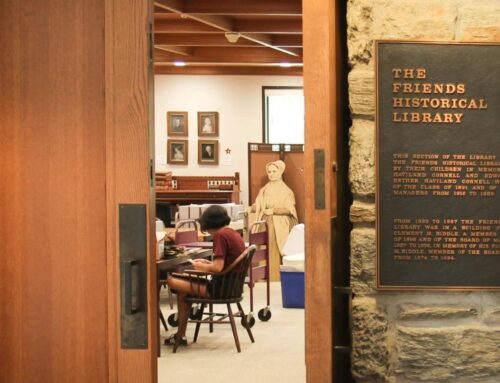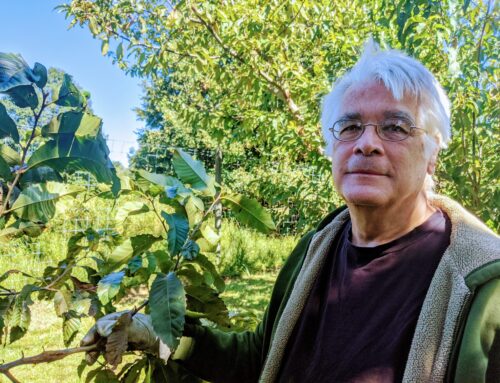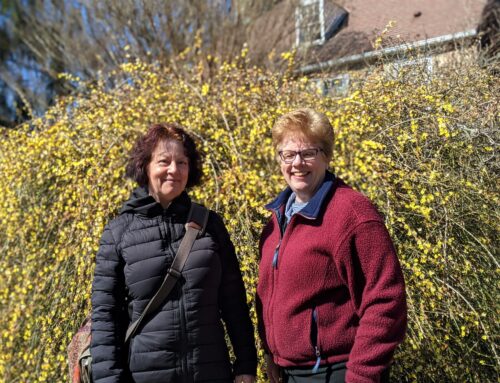I have always been interested in American history and that is part of the reason why I joined Tyler Arboretum as a history guide. Luckily for me, so has my husband Joel. We have spent many vacations visiting and learning about our nation’s history. As a professional librarian, I love nothing better than gathering information. I also have a personal connection to Quakerism. I am not a Quaker, but my father’s people were Quakers and I have done a fair amount of researching that side of my family tree. When the opportunity to learn more about the Quakers and the Underground Railroad arose, I was eager to find out more. Although the main emphasis at Tyler Arboretum is the magnificent collection of plants (as it should be), I found it fascinating to learn more about the Painter family and the Quaker ideals that shaped their actions and contributions to our history. I have always admired Quakers for maintaining their faith even if their views were unpopular with others.
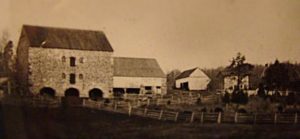
Quakers believe God is in each human being. Because of this, many had been objecting to slavery since before the Revolutionary War. The Society for the Relief of Free Negroes Unlawfully Held in Bondage was formed by Quakers in Philadelphia in 1775. By 1780, the Pennsylvania Quakers passed “An Act for the Gradual Abolishment of Slavery”, which outlawed owning slaves among Quakers. Quakers who still kept slaves were “read out” or ousted from the meetinghouse. They were the first denomination in the United States to formally come out against slavery.
Escaped slaves, with help from Quakers, free blacks and others, had been making their way to Free states for some time. Because Pennsylvania, a Free State, bordered on slave holding Maryland and Delaware, it was an obvious destination. Initially, former slaves were considered free once they reached a free state. However, things changed drastically in 1850 with the passage of the Fugitive Slave Act. The Fugitive Slave Act allowed slave hunters to go into Free states to track down runaway slaves. The local police were required to help them. Any person who was found guilty of aiding fugitives by providing food, shelter or any assistance could be fined $1,000 and sentenced to 6 months in prison.
Chester County in the 1800’s was heavily populated by Quakers. That fact plus its proximity to Delaware and Maryland led to a very active Underground Railroad. According to the Kennett Square Underground Railroad Center, 132 known agents have been identified. Of these, 82 were Quakers, and 31 were free blacks. Among this group was Eusebius Barnard of Pennsbury. Eusebius was married to Sarah Painter, daughter of Enos and Hannah Painter and sister to Minshall and Jacob.
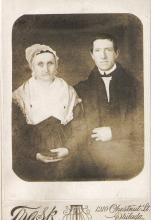
Eusebius Barnard and Sarah Painter
Renowned Underground Railroad “conductor” Harriet Tubman was known to point fugitives North to West Chester, West to Kennett Square or East to Delaware County and Philadelphia. Because of the strong support from Quakers in these areas, these routes were considered reasonably secure. In Media, Delaware County, the Providence Friends Meeting was known as an active participant of the Underground Railroad. Historians have also determined that the Honeycomb A.M.E Church, a historically black congregation, definitely sheltered escaped slaves. This Church is located on Barren Road, near Tyler Arboretum. It is thought that many of these new Pennsylvanians stayed in the area and became part of their new community.
Jacob and Minshall Painter were connected to the Underground Railroad in several ways. In addition to having a sister married to an active participant of the Underground Railroad, they subscribed to abolitionist newspapers and were known to be sympathetic to the cause. Minshall Painter even mentions in his diary that an escaped slave was sent to Lachford Hall by a known “conductor.” There was only one such entry found mentioning this occurrence, so it is unclear as to whether this happened only once or if it happened often. Since the Underground Railroad was illegal and the punishments for participating were severe, the people involved often did not write down data that could incriminate them and put their efforts at risk.
Although the Painter brothers resigned from the Society of Friends in 1842, they continued to support social reforms such as the abolition of slavery and women’s suffrage.
Interested in Quaker history? Visit the Friends Historical Library at Swarthmore college.




